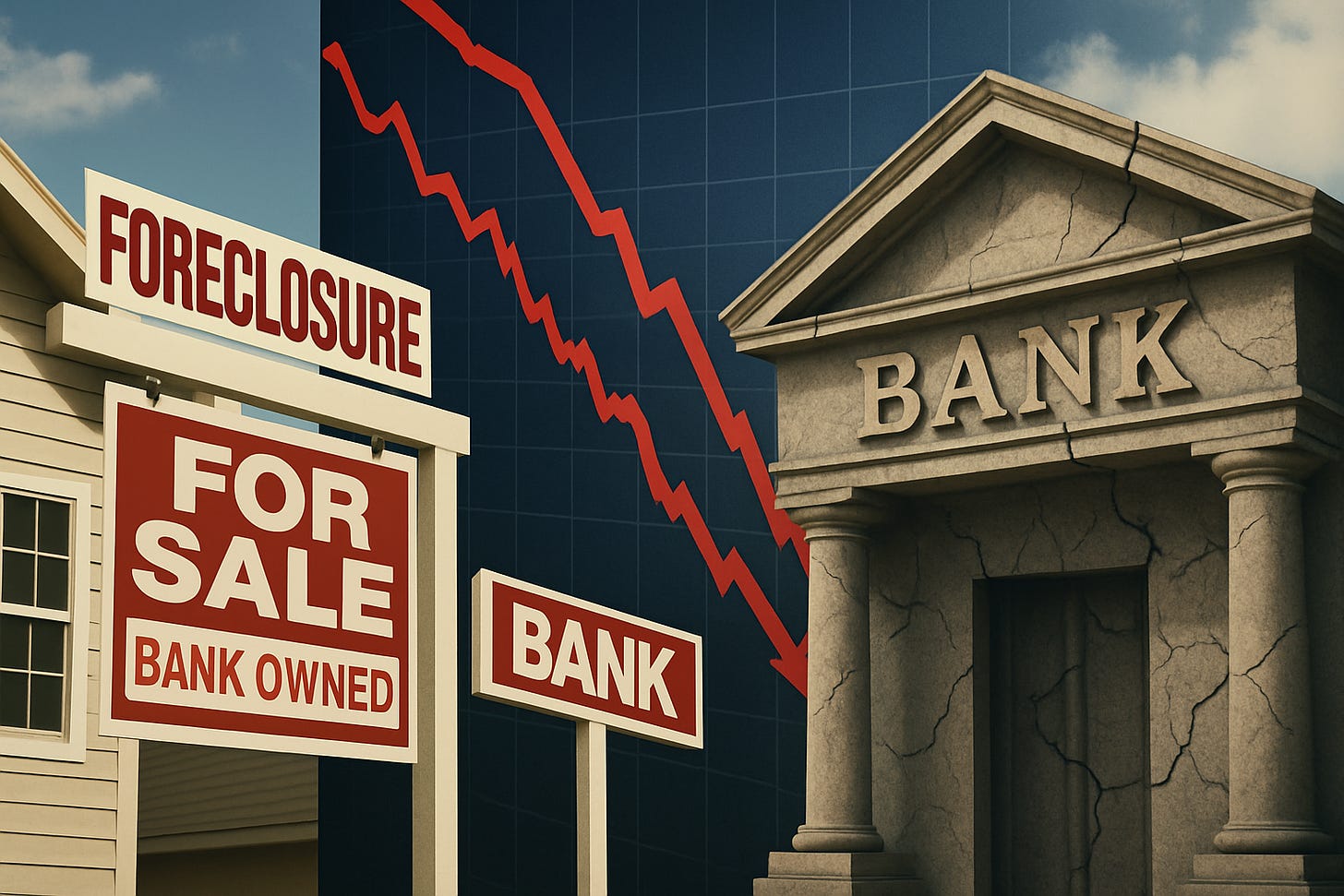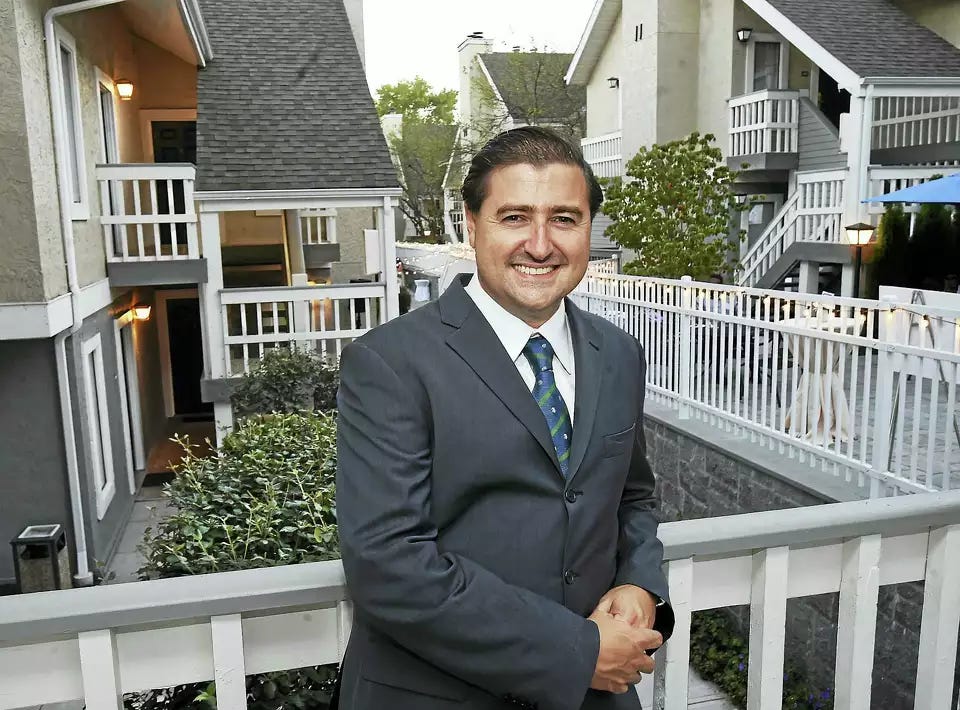The Accidental Developer
How I went from private lender to developer after 26 foreclosures—and what it taught me about the real business of real estate.
Recent Popular Posts
Most developers ease into the business with a mentor, a spreadsheet, or a master plan. Juan Salas-Romer didn’t have that luxury. He got into real estate the hard way—by being on the wrong side of the ledger when the music stopped in 2008. What began as a promising private lending firm turned into a gauntlet of foreclosures, hard lessons, and full-contact property management. In this candid guest post, Juan shares the five pivotal chapters of his career—from commercial lender to full-stack operator to strategic investor—and the brutal, unfiltered truths that shaped the way he builds today. If you’ve ever wondered what it really takes to survive and thrive in real estate, this is the story. Enjoy and let us know what you think in the comments below.
Cheers, John
I’m going to be brutally honest—and a little vulnerable.
I didn’t get into real estate development because I read a book, took a course on passive income, or interned at a fancy firm.
I got in because the music stopped—and I was still holding the promissory notes.
Not metaphorically. Literally.
I had lent money on deals that suddenly couldn’t pay me back—in a market that froze overnight.
What started as a high-margin lending business turned into a crash course in survival.
Here’s the story—in five acts.
Act I: The Lending Machine
Before I ever owned a property, I was in commercial banking.
Every day, I saw deals with real upside—experienced investors, solid business plans, properties that just needed the right timing.
But if they weren’t cash-flowing on day one, the answer was no. The rules were rigid.
And I remember thinking:
“We’re saying no to deals I’d personally back with confidence.”
So I started digging.
I spent nights studying asset-based lending, hard money models, and how construction loans worked outside the banking system.
I learned how private lenders operated with speed, structure, and risk-adjusted returns—focusing more on the asset’s future value than today’s cash flow.
And then—I did something about it.
I raised capital.
Launched a private lending company.
And started funding the kinds of deals that banks wouldn’t touch—but that I believed in.
We built for speed:
Approved borrowers based on experience
Issued proof of funds to help them lock down deals
Underwrote in under two weeks—desktop review, inspector visit, renovation budget
Managed draw schedules for construction
Helped clients refinance once stabilized
We charged 14% interest and 3–5 points.
Yes, you read that right.
Yes, it was legal.
No, it wasn’t boring.
Between 2004 and 2008, we funded over 160 deals.
The machine ran beautifully.
Until it didn’t.
Act II: When the Music Stops
Then came 2008.
The Great Financial Crisis.
The phone stopped ringing.
Deals froze mid-renovation.
The exits we were counting on? Gone overnight.
Real estate values collapsed. Banks went from:
“How big can we go?”
To:
“How fast can you go away?”
Refinancing dried up.
Borrowers defaulted.
And I was left holding 26 foreclosures.
No buyers. No capital. Just debt, vacancies, and pressure from every direction.
For eight months, I scrambled—negotiating with banks, investors, former clients.
There was no playbook. Just duct tape and willpower.
Act III: The Scramble Years
By the end of 2009, I wasn’t a lender anymore.
I was a landlord.
My loan underwriter became my admin assistant.
And me?
I was the maintenance guy.
The bookkeeper.
The collections department.
The eviction officer.
And—on a good day—the tenant therapist.
We did it all:
Leasing units
Fixing toilets at midnight with YouTube tutorials
Filing Section 8 paperwork while on hold for 47 minutes
Explaining—again—that “no, the heat does not work better if you scream at it”
Negotiating with tenants about why yes, rent is still due—even if their cousin “usually pays it”
Replacing smoke detectors that tenants swore were “just for decoration”
There were no systems. No team. Just two guys, 26 properties, and a growing sense that real estate was a little less passive than advertised.
Some properties were okay.
Most?
Let’s just say: I had been fine lending on them. I would’ve never bought them.
Lesson learned.
So we did what we could: sold what we could, refinanced when possible, bought better ones when lucky, repositioned everything else with spit, grit, and duct tape.
It wasn’t pretty. But it kept us alive.
Act IV: The Strategic Shift
By 2012, the fog started to lift.
We hit 97 units. For the first time, we had enough revenue to build a real team.
I hired:
A property manager
A leasing agent
Two full-time maintenance techs
It was like going from a tricycle to a real bike—with brakes.
And everything changed.
I stepped out of the weeds.
And into a more strategic role.
Act V: What Actually Changed
That’s when I started seeing things clearly:
Which properties actually made money
Which neighborhoods had pricing power
Why good tenants stayed (and which ones should never have moved in)
And how systems—not heroics—create sustainability
But most of all, I figured out where I created value.
Spotting opportunity—seeing past the mess to the upside
Building trust—with lenders, tenants, investors, and partners
Transforming things—properties, teams, systems
The day-to-day chaos? The repair calls? The vendor chasing?
I hated it.
So I made the best hire of my career: someone who loved the weeds.
That’s when the business became scalable.
That’s when the vision became real.
Curtain Call
That was my real estate education.
No webinars. No TikToks. No “mastermind weekends.”
Just 26 foreclosures, dozens of sleepless nights, and a very expensive reminder that optimism is not a strategy.
But it also taught me how to pivot: From lender to landlord.
From operator to developer.
From doing it all… to doing what I’m best at—and building a team around the rest.
If you're serious about this path, here’s what I know:
You won’t always time the market right.
You won’t always make the smartest call.
But if you:
Lead with clarity
Protect your downside
And treat every stakeholder with respect
…you’ll have the right people in your corner when it matters most.
Because in this business—like in life—you’re not just compounding capital.
You’re compounding trust, resilience, and reputation.
And if you’re chasing passive income or get-rich-quick dreams?
Let me save you a few years:
There’s nothing passive about a Sunday sewer backup.
Or about chasing a contractor who “ran out for coffee” and never came back.
What It Actually Takes
Wearing every hat in the early days—and realizing each one matters
Understanding that development is a team sport—you’re only as strong as your crew
Earning trust early—because this is a long game built on reputation
Knowing which details to obsess over—and which to delegate without guilt
Getting clear on your investment thesis—so every move serves the bigger picture
Building not just for scale—but for staying power
If this story resonated, I invite you to go deeper.
Here are three real projects I led—each one a different challenge, a different strategy, and a different kind of transformation.
In each, I break down:
The opportunity
The mess we walked into
The strategy that got us through
And what we learned along the way
[Ashmun Flats: Turning Blight into Community-Driven Housing]
How we stitched together five parcels, three building types, and one mission to bring a neighborhood back to life.
[The Palladium: From Historic Office Building to Micro-Apartments]
The story of a neglected landmark, a collapsing lease, and how we turned it into a thriving downtown living option.
[The Hotel Flip: A Tactical Repositioning Play with Long-Term Impact]
What happens when you buy a struggling extended-stay hotel—and decide to bet on its potential instead of its past.
Each one is real.
Each one tested me.
And each one shaped how I build today.
Hope to see you there.
Build smarter. Build to Thrive.
Juan M Salas-Romer
About the Author
Juan Salas-Romer is the Founder and Editor of Build to Thrive and the President & CEO of NHR Group, a real estate investment and development firm focused on transformative real estate and business turnaround projects. An award-winning investor and business development leader, Juan brings over 20 years of experience driving companies from inception to 7-figure revenues across the finance, real estate, hospitality, and education sectors. His work sits at the intersection of economic growth, innovation, and community impact. Linkedin bio: Juan Salas-Romer
Thank you for reading The Lineup. Do you have a topic on real estate development, entrepreneurship, urbanism or placemaking topic you'd like to see us cover in an upcoming post? We'd love to hear from you! We are also open to media partnerships and cross-posts. Reach out to us at info@pughmgmt.com. And don't forget to like, share, and subscribe!
If you like The LineUp, let’s connect: Join our chat conversation on Substack here. Plan a media partnership | 🪄Book a one-on-one intro call to learn more about Our Real Estate Consulting here | 📧 Subscribe at thelineupwithjohnpugh.substack.com









I really appreciate the feature, John. Excited to keep building together.